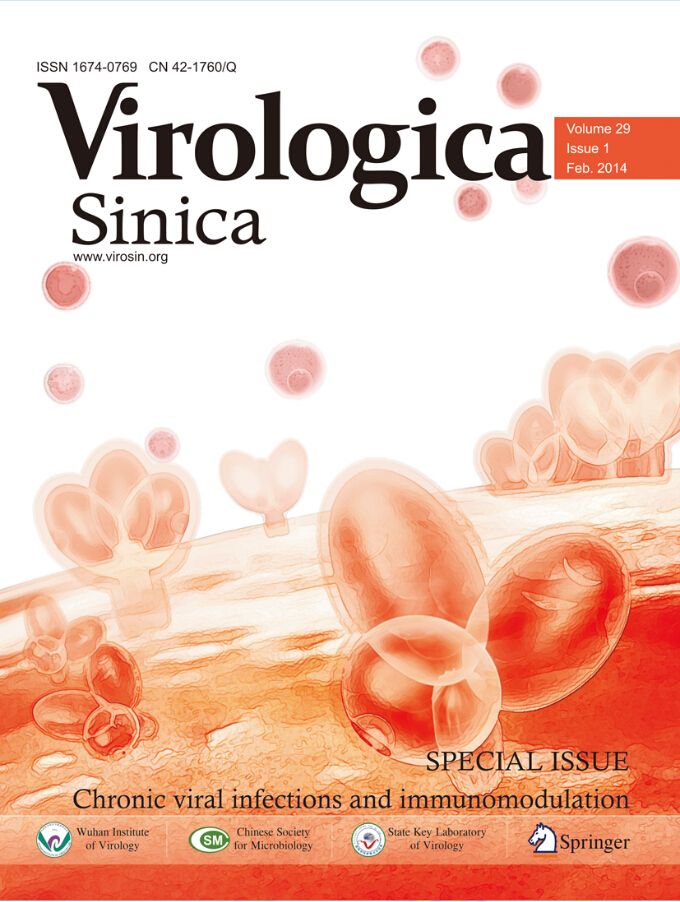Mengji Lu, Yumei Wen.Interaction of viruses with host immune system and immunomodulation in chronic viral infections .VIROLOGICA SINICA, 2014, 29(1): 1-2.doi: 10.1007/s12250-014-3437-7
Citation:
Mengji Lu, Yumei Wen.
Interaction of viruses with host immune system and immunomodulation in chronic viral infections .VIROLOGICA SINICA, 2014, 29(1)
: 1-2.
http://dx.doi.org/10.1007/s12250-014-3437-7
Interaction of viruses with host immune system and immunomodulation in chronic viral infections
-
1.
Institute for Virology, University Hospital of Essen, University Duisburg-Essen, 45122 Essen, Germany
-
2.
Key Laboratory of Medical Molecular Virology of Ministries of Education and Health, Shanghai Medical College and Institute of Medical Microbiology, Fudan University, Shanghai 200032, China
-
Corresponding author:
Mengji Lu, mengji.lu@uni-due.de
Yumei Wen, ymwen@shmu.edu.cn
-
Published Date:
22 January 2014
Available online:
01 February 2014
-
Abstract
When you closely read the papers in this issue, you may find those researches are commonly founded by a so-called TRR60 program. The Transregional Collaboration Re-search Project (TRR) is a highly ranked program of German Research Foundation (DFG) to support the scientific competence with a strong focus on a specific research area. The joint German-Chinese TRR60 was firstly established by DFG in collaboration with the Ministry of Science and Technology (MOST) of China in 2009 and renewed by The National Science Foundation of China (NSFC) and DFG in 2013. The TRR60 recruited recognized scientists in the research field on viral infection and immunology from both countries. This research program is a result of the great effort of Chinese and German scientists, represents a milestone in the history of long standing and fruitful collaboration, and serves as a platform for active interaction and exchange.
-

-
-
References
-
Cao H, Zhu W, Han Q X, et al. 2014. Virol Sin, 29: 61-70
doi: 10.1007/s12250-014-3408-z
-
Chen J L and Yuan Z H. 2014. Virol Sin, 29: 17-24.
doi: 10.1007/s12250-014-3412-3
-
Dang S, Wang Y, Budeus B, et al. 2014. Virol Sin, 29: 40-47.
doi: 10.1007/s12250-014-3389-y
-
Joedicke J J, Dietze K K, Zelinskyy G, et al. 2014. Virol Sin, 29: 48-60.
doi: 10.1007/s12250-014-3396-z
-
Kozlova D, Sokolova V, Zhong M H, et al. 2014. Virol Sin, 29: 33-39.
doi: 10.1007/s12250-014-3379-0
-
Liu J, Kosinska A, Lu M J, et al. 2014. Virol Sin, 29: 10-16.
doi: 10.1007/s12250-014-3410-5
-
Ren Y S, Ding Q Q and Zhang X L. 2014. Virol Sin, 29: 25-32.
doi: 10.1007/s12250-014-3421-2
-
Temchura V and Tenbusch M. 2014. Virol Sin, 29: 7-9.
doi: 10.1007/s12250-014-3419-9
-
Tucci F and Küppers R. 2014. Virol Sin, 29: 3-6.
doi: 10.1007/s12250-014-3414-1
-
Proportional views

-











